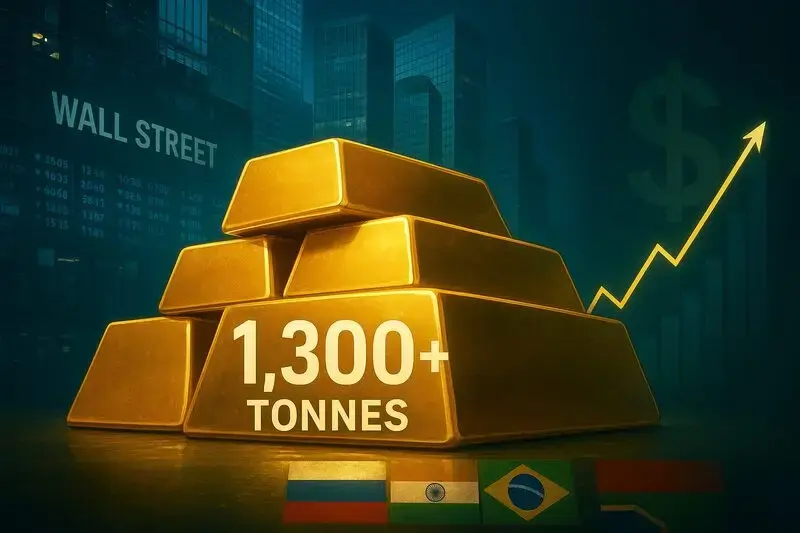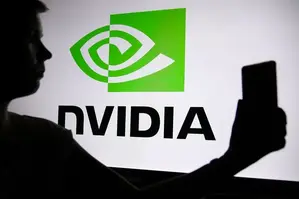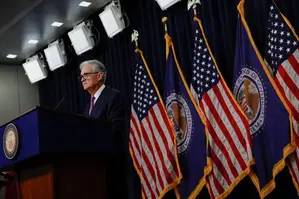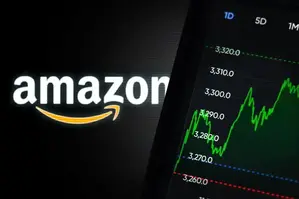Wall Street’s reaction to the BRICS currency has been nothing short of dramatic, and at the time of writing, major financial institutions have accumulated over 1,300 tonnes of gold since 2022. With BRICS talks of a common currency coming out in 2026, traders and central banks are reassigning billions of dollars of precious metals currently. The trend of de-dollarization by BRICS is driven by the fact that the member countries command 56 percent of world population and fifty percent of the world economic production, officially overtaking the G7. Gold has surpassed the $4,000 per ounce mark and its effects are being felt at trading desks, making understanding how the BRICS currency works critical for investors watching this historic shift.
Also Read: BRICS Just Unveiled the Plan to Replace US Dollar Worldwide
BRICS Currency Reaction Wall Street And How Gold, De-Dollarization Impact Investors

Why Wall Street Is Buying Gold Right Now
Since 2022, central banks in emerging markets in particular have bought gold in unprecedented volumes, purchasing more than 1,000 tonnes per year since 2022. Wall Street recorded investments through Exchange-Traded Funds, and 2024 marked the first year since 2020 where gold ETF balances remained relatively stable after three years of outflows. Wall Street’s response to the BRICS currency announcement propelled gold futures to $4,043.30 per troy ounce, representing a 52% increase in 2025 alone.
This is unusual because no financial crisis caused the rally. Instead, what traders call the debasement trade fuels it. Investors with dollar concerns flock into gold and bitcoin as well as other assets at the moment. This Wall Street gold buying trend indicates increasing concerns about how the BRICS currency erodes the dollar, and the timing matters.
Other buyers include individual investors purchasing bars and coins, pension funds moving allocations, and even the jewelry industry playing a role in this shift. The reaction from Wall Street to the BRICS currency has been measured but decisive, with smart money quietly repositioning portfolios.
The BRICS Common Currency Threat
Talks have been circulating that by 2026 BRICS will introduce a shared currency that member countries will use in their trade and settlements with other nations. Some upcoming economies are waiting on the fringes at the moment, preparing to leap into a multipolar financial world. For 80 years since 1944, the dollar has been the world reserve currency, and every major transaction from oil to gold went through the dollar. But de-dollarization efforts by BRICS are changing that reality right now.
Foreign ownership of US debt has been falling to the lowest levels in decades. The dollar’s share of global reserves dropped from 70% to just 58% over two decades, which is a significant decline. Trade volume among BRICS nations increased by $700 billion in just three years, and now 50% of trade settlement happens without the dollar. The reaction on Wall Street to the BRICS currency launch has been to hedge against this systematic replacement of dollar-based transactions.
When Brazil chooses Asian electric vehicles over Ford, that’s not just competition—that’s economic realignment. When India develops its own defense systems instead of purchasing American weapons, the country loses billions in exports. Even more, when Russia created their own payment system, they built infrastructure to replace American financial dominance.
How BRICS Currency Works Against the Dollar
De-dollarization by BRICS operates through multiple channels, and it’s already playing out in real-time. BRICS nations establish bilateral trade agreements that bypass dollar intermediation entirely. When Western banks in London, Europe, and New York froze Russia’s reserves, other nations watched and asked themselves why they would keep wealth in systems that authorities can seize. They found the answer in gold—accumulating it in domestic vaults where they control access.
The common currency plan from BRICS aims to create an alternative settlement system that’s independent of US financial infrastructure. Understanding how the BRICS currency works requires recognizing that it’s not just about creating a new monetary unit—it’s about building parallel financial architecture. The reaction from Wall Street to the BRICS currency reflects recognition that this represents a fundamental shift.
Wall Street buying gold right now reflects this strategic repositioning. Mining stocks have been outperforming as metal prices rise, and investors are also looking at alternatives. Bitcoin has emerged as part of the trade too—a stateless currency that no government controls, and it’s already being used for international settlement. El Salvador and Argentina have adopted Bitcoin as legal tender, which shows the momentum.
Also Read: Gold Prices Projected To Reach $6000 & $9000: Here’s a Timeline
Market Impact and Portfolio Shifts
Wall Street’s reaction to BRICS currency de-dollarization includes identifying vulnerable sectors. US exporters heavily reliant on BRICS markets are at risk—companies like Ford losing market share to BYD, and Apple facing competition from Huawei. Defense contractors could lose billions in contracts if geopolitical pressures don’t work. On the flip side, resilient companies include tech giants like Microsoft, Google, and Amazon, which have global revenue and can adjust pricing accordingly.
Domestic US companies in utilities, regional banks, and healthcare may actually benefit as money rotates into sectors less exposed to international disruption. The common BRICS currency threat has made investors reassess portfolio allocations, and gold has been the primary beneficiary so far.
Understanding how the BRICS currency works and its implications for dollar dominance explains why Wall Street’s 1,300+ tonnes of gold purchases signal a fundamental shift in global monetary power. The reaction to BRICS currency de-dollarization on Wall Street has been swift, and the trend toward buying gold shows no signs of slowing down as 2026 approaches.






